本文最近更新:2024年1月3日

罗丹
作为传统雕塑艺术集大成者,现代雕塑艺术开创者,也是中国观众最为熟悉的欧洲雕塑家之一,奥古斯特·罗丹将自己的实践立足于古典和文艺复兴的传统,同时为现代雕塑铺平了道路。从很早期的阶段开始,他便对运动、身体的表达、偶然的效果和残缺的碎片感兴趣。他的《思想者》、《吻》、《地狱之门》等作品富于创新和突破,成为了家喻户晓的杰作。
为了让广大观众可以在“家门口”欣赏到更多顶级艺术名家的作品,罗丹大师的两件作品《多西亚》与《少女胸像》在今天(3日)亮相海派艺术馆,揭开了它们的神秘面纱。
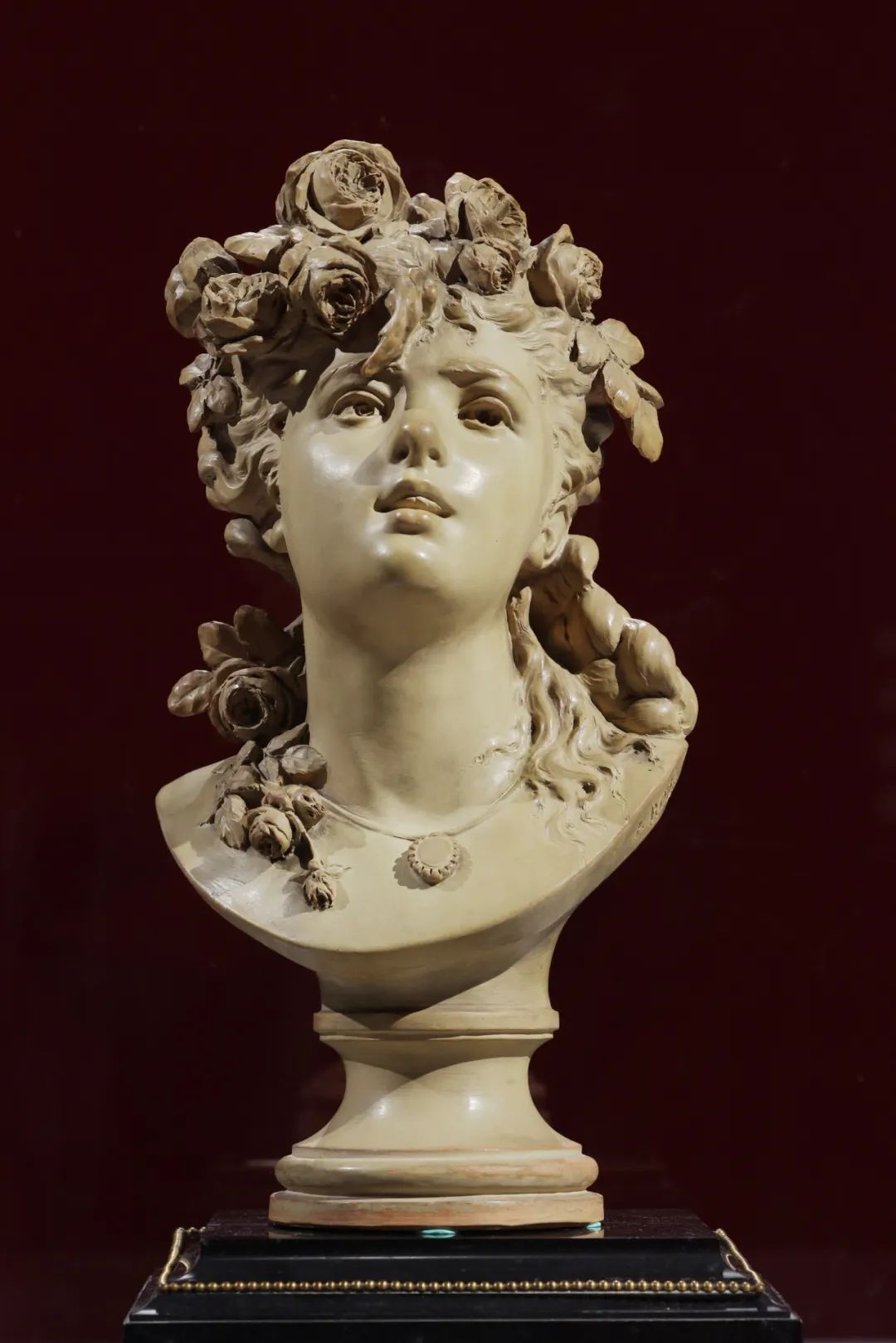
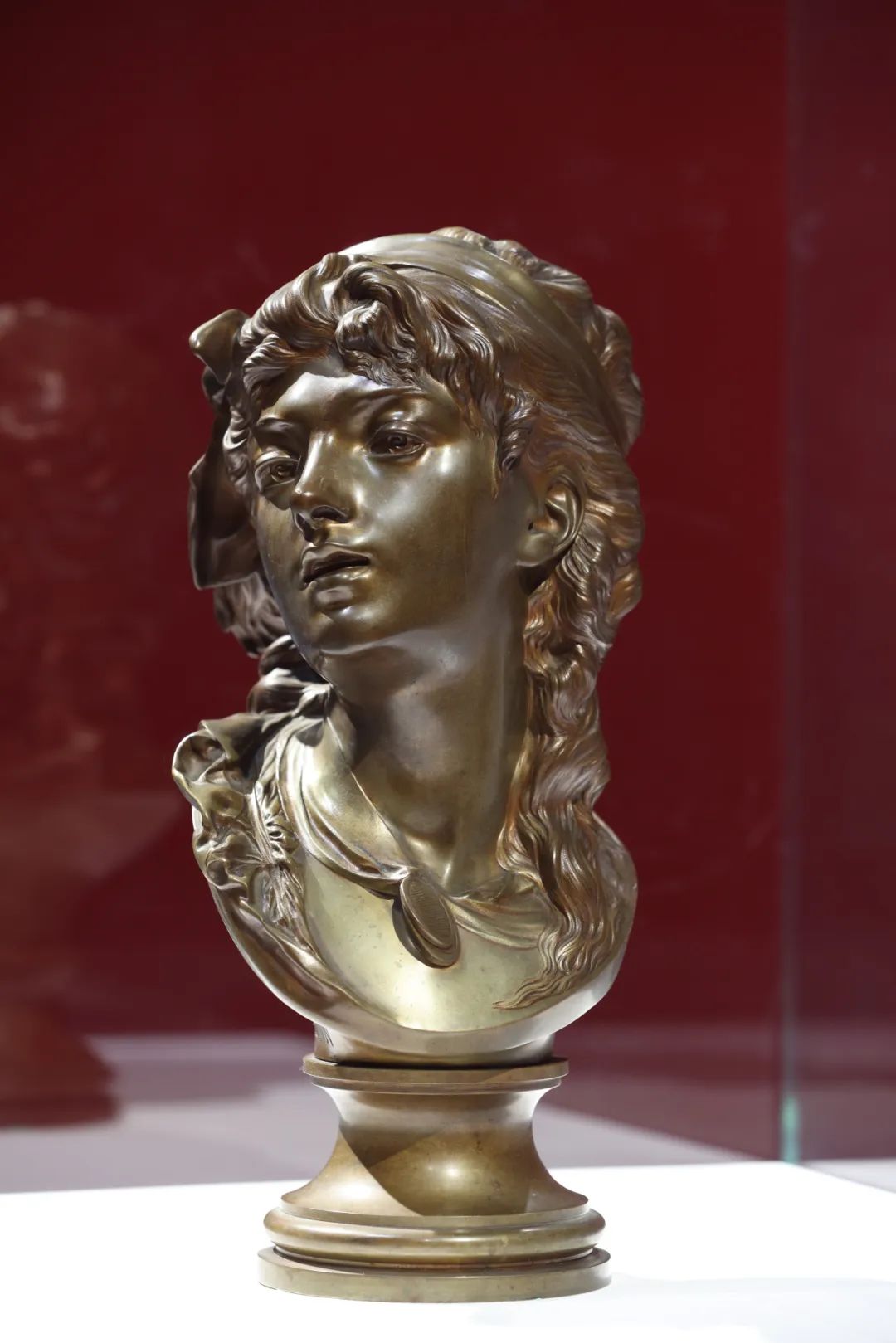
为了更好地展示罗丹的作品,海派艺术馆早已为作品布置好了颇具沉浸式氛围的专属展厅。经过精心策划,“永恒的爱”十九世纪欧洲经典艺术展设置了多个场景装置区域,在罗丹展区,则是完美地再现了雕塑家的工作场地,将“雕塑家工作室搬进展厅”,让观众身临其境地感受、了解创作背景。
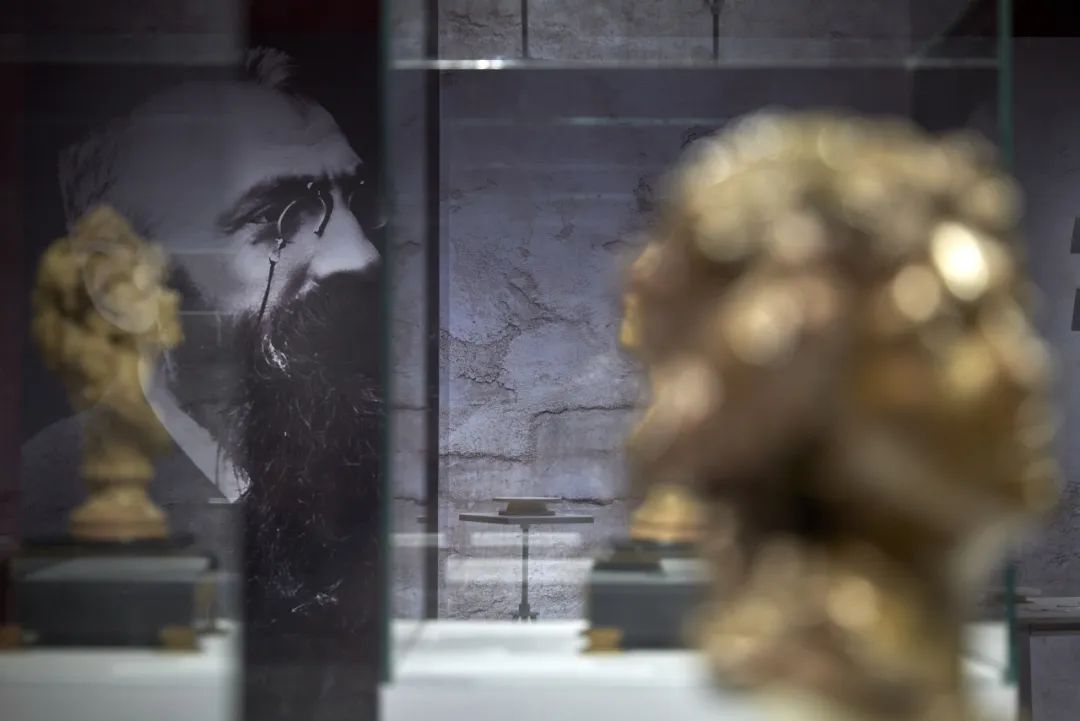


不同于常规的场景复原,“雕塑家工作室”被设计成以纯白的色彩来呈现,所有的道具和场景皆为白色,为观众们带来当代的感官体验,获得极强的现场效果。观众们可以进入场景内拍照、打卡,置身于“工作室”里,感受作品所蕴含的艺术力量,与艺术家进行一场心灵的对话。

菲利普·普瓦特万

菲利普·普瓦特万
女神维纳斯在希腊罗马神话中的地位举足轻重,她是罗马创建者的继承人埃涅阿斯的母亲,因掌管“美丽”和“魅力”而被众神认可,这令赫拉(女性保护神和婚姻女神)以及雅典娜(战争和智慧女神)十分嫉妒。人们相信,她代表了优雅、愉悦、爱以及生育力。这座雕像中的维纳斯呈站姿,形态活泼,身旁是象征爱情的小天使。
The goddess Venus holds a significant place in Greek and Roman mythology. As the mother of Aeneas, heir to the founder of Rome, she is recognized by the gods for presiding over “beauty” and “charm”. This acknowledgment stirs jealousy from Hera, the protector of women and goddess of marriage, and Athena, the goddess of war and wisdom. Venus is believed to represent elegance, pleasure, love, and fertility. The statue depicts Venus in a standing position, exuding liveliness, with small cherubs symbolizing love by her side.

菲利普·普瓦特万生于马赛地区的圣马克西曼,在阿尔曼德·图森(Armand Toussaint)和马里乌斯·拉莫斯(Marius Ramus)的工作室接受相关训练。他在1851年马赛艺术展上凭借一些新古典主义的作品(如这座《维纳斯》)进入艺术领域,之后他参加了1855年巴黎世博会。他职业生涯早期前途光明,这一点在其参与制作了杜乐丽宫和卢浮宫大量雕刻装饰物上表现得尤为明显。
Philippe Puget was born in Saint-Maximin, Marseille. He received training in the studios of Armand Toussaint and Marius Ramus. In 1851, he entered the art world at the Marseille Art Exhibition with some Neoclassical works, such as the sculpture Venus. Subsequently, he participated in the Exposition Universelle of 1855. His early career showed promise, particularly evident in his contributions to the extensive sculptural decorations of the Tuileries Palace and the Louvre.

爱德华·安布罗斯

爱德华·安布罗斯
爱德华·安布罗斯
这两组中等大小的大理石雕塑,讲的是取自阿普列乌斯(Apulée)《变形记》(Métamorphoses)中两个关于普赛克的著名故事。
These two medium-sized marble sculptures depict two famous stories about Psyche from Métamorphoses by Apulée.
普赛克是国王的女儿(她的名字在希腊文里象征灵魂),因其太过美丽,众多追求者都长途跋涉来一睹其芳容。这一切让美神维纳斯心生嫉妒,于是便让其子爱神丘比特去设法使普赛克爱上一个丑陋的怪物,但丘比特却深深地被她吸引,而未能完成母亲交给他的任务,丘比特对她一见钟情,于是其用轻柔的微风把这位美丽的凡人带到了其宫殿。普赛克可以拥有丘比特的财富并享受丘比特对她的爱,但须履行承诺即不能企图去弄清楚和她一起生活的丘比特的真实身份和容貌。
Psyche, the daughter of a king (whose name symbolizes the soul in Greek), was so incredibly beautiful that numerous suitors traveled far to catch a glimpse of her. Her beauty fueled the jealousy of the goddess Venus, who tasked her son, the God of Love, Cupid, with making Psyche fall in love with a hideous monster. However, Cupid was captivated by her beauty and failed to fulfill his mother’s command. Cupid, enamored with Psyche at first sight, gently carried her to his palace on a soft breeze. Psyche was allowed to enjoy Cupid’s wealth and love on the condition that she must not attempt to discover his true identity and appearance.

在她心生妒忌的姐姐们的怂恿下,普赛克拿着油灯去看她熟睡的爱人,她发现他是如此地英俊迷人,激动不已。也许是太过激动,普赛克不慎将一滴滚烫的灯油落在了丘比特的身上(雕塑《丘比特和普赛克》即表现的是这个场景),突然惊醒的丘比特发现普赛克违背了对他的承诺,于是愤怒伤心地飞走了,消失在空气中。普赛克疯狂地寻找丘比特,但无人愿意提供帮助,绝望之中她来到维纳斯的住所向维纳斯求情。维纳斯把她当作奴隶一样让她做苦役,受尽折磨,最后让她送给冥界的珀耳塞福涅一个珍贵的盒子,并严禁其打开盒子。回来的路上,普赛克忍不住打开了盒子,吸入了地狱的气息,因此陷入了接近死亡的深睡中。丘比特看到她毫无声息地躺着,疾飞而至,轻轻地触碰她,确定她还活着。雕塑家抓住这一场景:丘比特搂着普赛克,帮助她坐起来,把脸贴近他爱人的面庞。雕塑《爱神吻醒普赛克》展现的就是这一令人动容的瞬间。最终,众神召开会议,允许丘比特和普赛克成婚,并让这个年轻的女孩获得永生,成为众神之一。
Encouraged by her jealous sisters, Psyche, holding a lamp, decided to sneak a peek at her sleeping lover. To her excitement, she discovered his stunning handsomeness. Overwhelmed with emotion, Psyche accidentally spilled a drop of scalding oil on Cupid (depicted in the sculpture Cupid and Psyche). Startled, Cupid awoke, found Psyche had violated her promise, and, in anger and sorrow, flew away, disappearing into the air. Frantically searching for Cupid, Psyche found no one willing to help. In desperation, she pleaded with Venus for assistance. Venus treated her like a slave, subjected her to torment, and eventually tasked her with delivering a precious box to Persephone in the Underworld, strictly forbidding her from opening it. On the way back, unable to resist temptation, Psyche opened the box and inhaled the breath of the underworld, falling into a near-death sleep. Upon seeing her lifeless form, Cupid swiftly arrived, gently touched her, and ensured she was still alive. The sculpture Psyche Revived by Cupid’s Kiss captures this touching moment, with Cupid embracing Psyche, helping her sit up, and tenderly pressing his face against hers. In the end, a divine council permitted Cupid and Psyche to marry, granting the young woman immortality as she became one of the gods.
乔万尼 • 安东尼奥 • 拉布斯
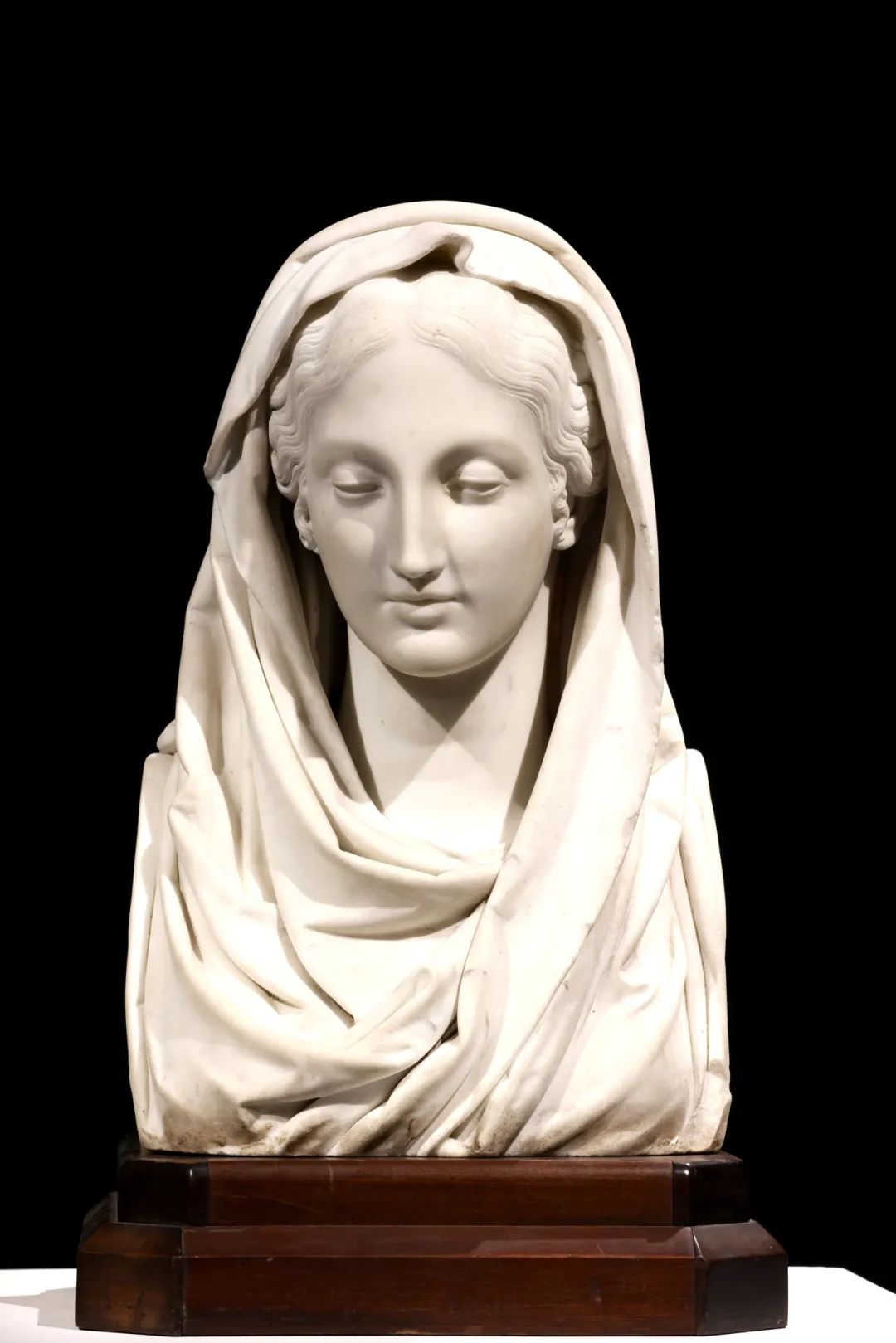
乔万尼 • 安东尼奥 • 拉布斯
这尊雕像是乔万尼·安东尼奥·拉布斯(1806-1857)于1840年所作,被誉为“雕塑界的蒙娜丽莎”。在2017年布鲁塞尔古董双年展上展出时,所有见到她的人都驻足不前,深深地被它的美丽所折服。修女的面容很安详、平静,汉白玉雕成的头巾呈现出柔软的质地,令人惊叹,是最为吸引人的地方。
This sculpture, created by Giovanni Antonio Labus (1806-1857) in 1840, is hailed as the “Mona Lisa of the sculpture world”. When it was exhibited at La Biennale Paris 2017, everyone who looked at her was captivated by her beauty, standing still in awe. The nun’s countenance is serene and calm, while the headscarf carved from white marble exhibits a truly astonishing soft texture and the most captivating aspect of the artwork.

古格里莫 • 巴尔迪

古格里莫 • 巴尔迪
这个女性形象叫雅亿,“雅亿”在希伯来文中的意思是“山羊”,出自《圣经·士师记》。雅亿是帮助以色列人击败迦南王耶宾的大功臣,当迦南大将西西拉撤军逃跑时,他躲进雅亿的帐篷。由于当时男人不能进入女人的帐篷,因此不会有人想到去那里搜寻西西拉。雅亿为示热情,降低他的警觉,用自己的奶来款待他。当他睡着了,雅亿悄悄地到他旁边,用锤子把帐篷的橛子钉进他的鬓角,将他杀死。以色列人军心大振,一举灭掉迦南王,为这一地方带来逾四十年的和平。
This female figure is called Jael, and “Jael” in Hebrew means “goat”, as mentioned in the Book of Judges in the Bible. Jael played a significant role as a heroine who helped the Israelites defeat the king of Canaan, Jabin. When the Canaanite general Sisera retreated after being defeated by the Israelites, he sought refuge in Jael’s tent. Since, according to the customs of the time, men could not enter a woman’s tent, nobody suspected Sisera would be hiding there. Jael offered him hospitality, including her milk, to deceive him and lower his guard. When he fell asleep, Jael took a hammer and drove a tent peg through his temples, killing him. Inspired by this act, the Israelites gained a decisive victory over the Canaanite forces, bringing over forty years of peace to the region.
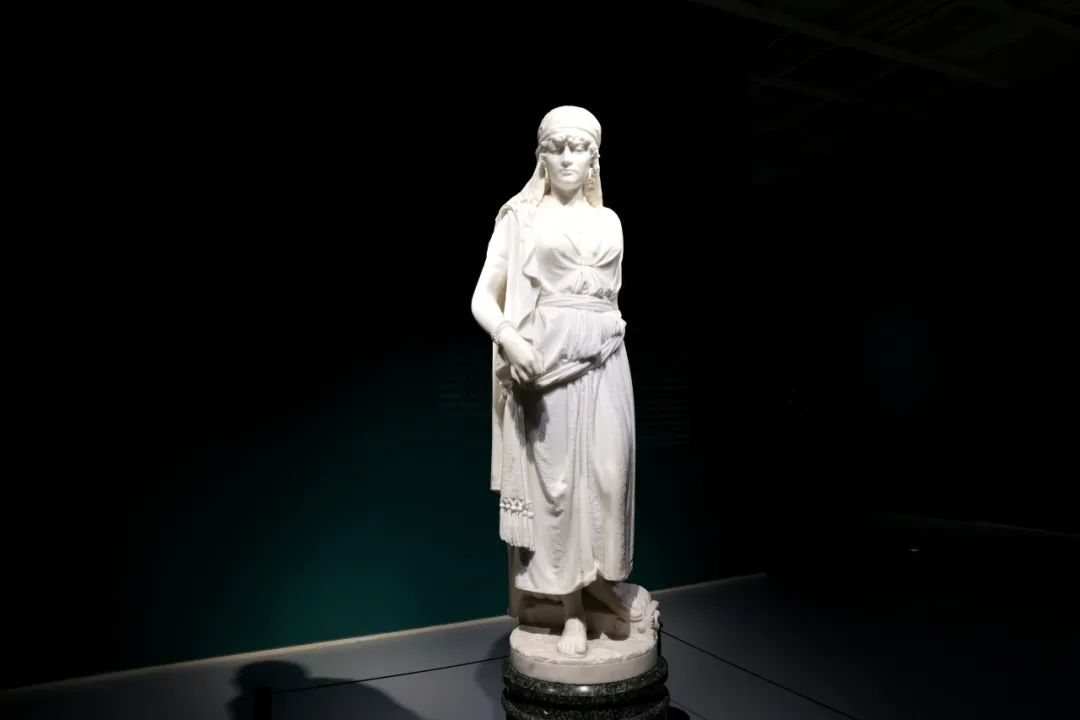
安东尼奥·博尔托内

安东尼奥·博尔托内
安东尼奥・博尔托内是19世纪意大利著名的雕塑家之一。他的职业生涯始于那不勒斯的美术学院,后来成为其名誉教授。他为意大利各省的纪念碑做出了很大的贡献,其中最卓著的是意大利国民议会维多利奥·埃马努埃莱三世国王的半身像,以及在圣十字大教堂的佛罗伦萨著名历史学家吉诺・卡波尼(Gina Capponi)半身像。由于出色地完成了订单,他获得过多次骑士勋章。
Antonio Bortone was one of the renowned Italian sculptors of the 19th century. His professional career began at the Naples Academy of Fine Arts, where he later became an honorary professor. He made significant contributions to monuments across various provinces in Italy. Among his notable works are the half-length bust of Vittorio Emanuele III, King of Italy, for the National Congress of Italy, and the half-length portrait of the famous Florentine historian Gina Capponi in Basilica di Santa Croce. Due to his outstanding completion of commissions, Bortone received numerous knighthoods for his achievements.
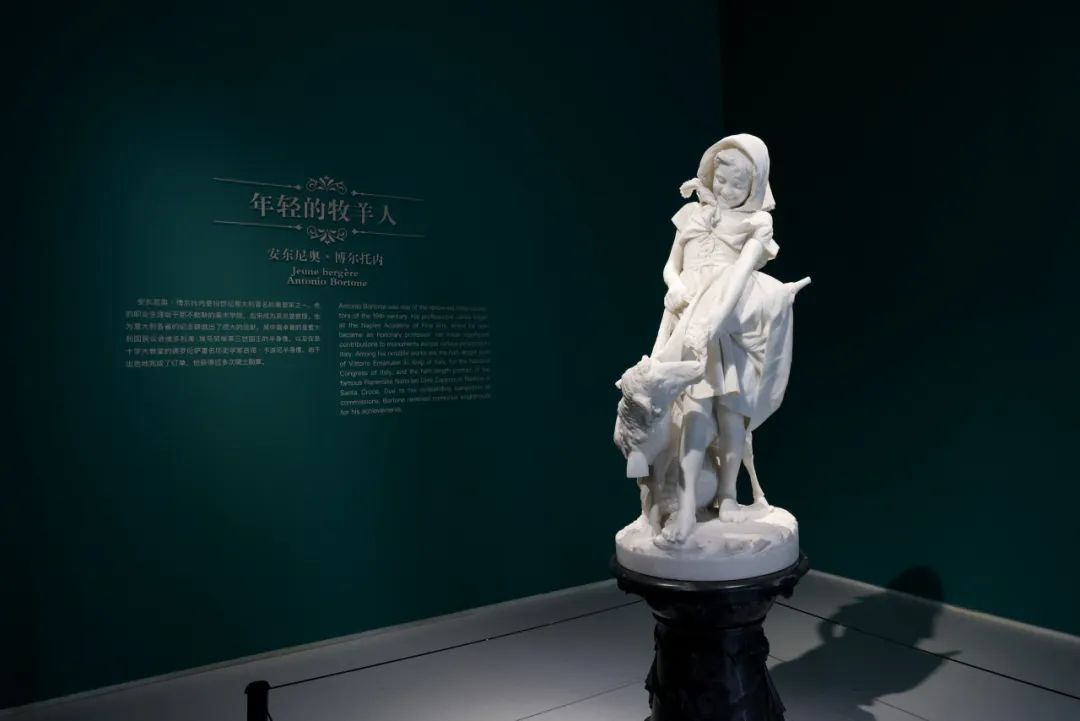
让·巴普蒂斯特·卡尔波
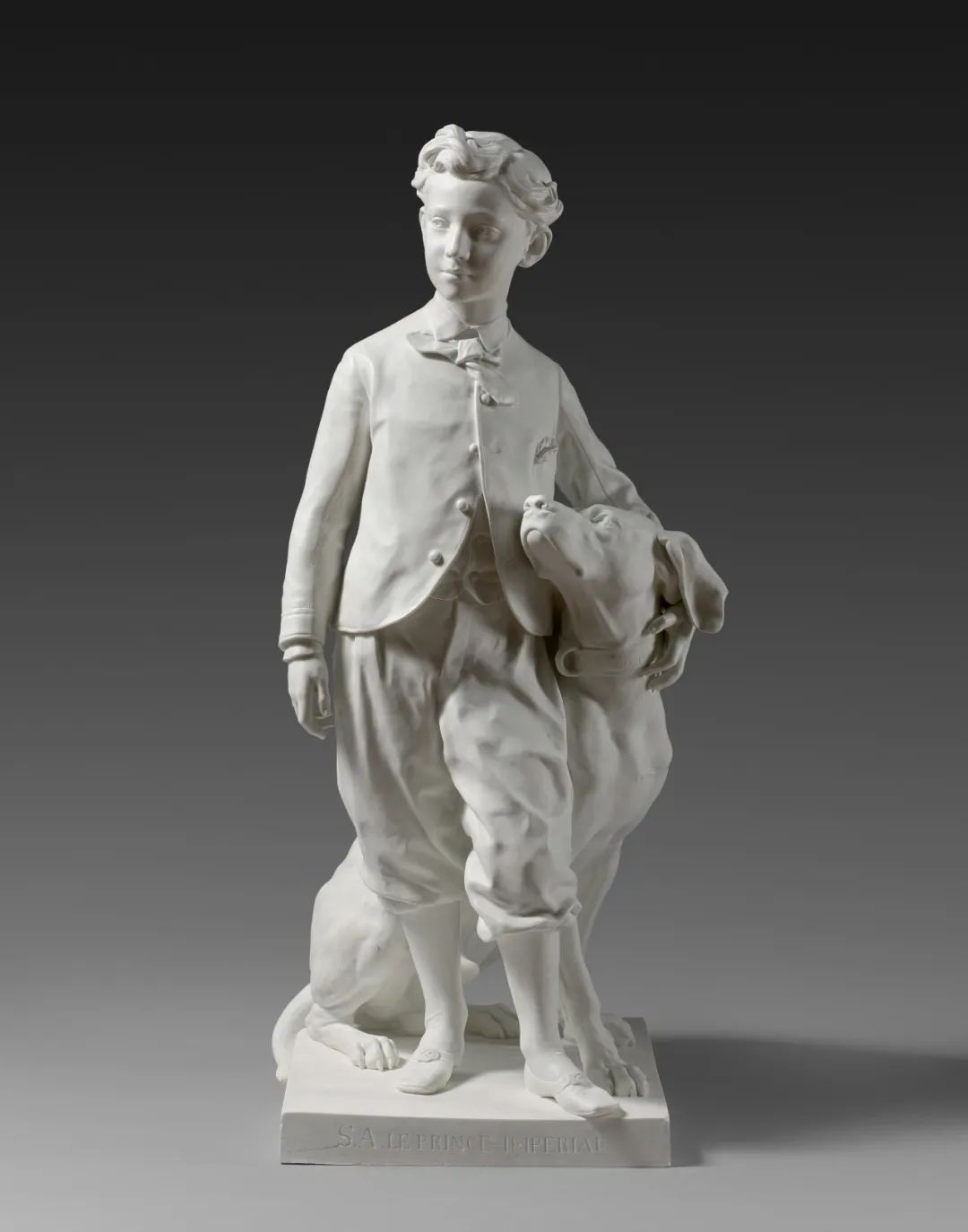
让·巴普蒂斯特·卡尔波
从意大利回到法国后,卡尔波凭借作品《渔童》获得成功,且小有名气。1863年,拿破仑三世的表妹玛蒂尔德(Mathilde)把卡尔波介绍给皇室,他因而成为皇太子路易·波拿巴(Louis Bonaparte)的绘画和模塑老师。
After returning from Italy to France, Jean-Baptiste Carpeaux achieved success and gained some fame with his work Neapolitan Fisherboy. In 1863, Napoleon III’s cousin Mathilde introduced Carpeaux to the royal family, leading him to become the painting and sculpture teacher for Crown Prince Louis Bonaparte.
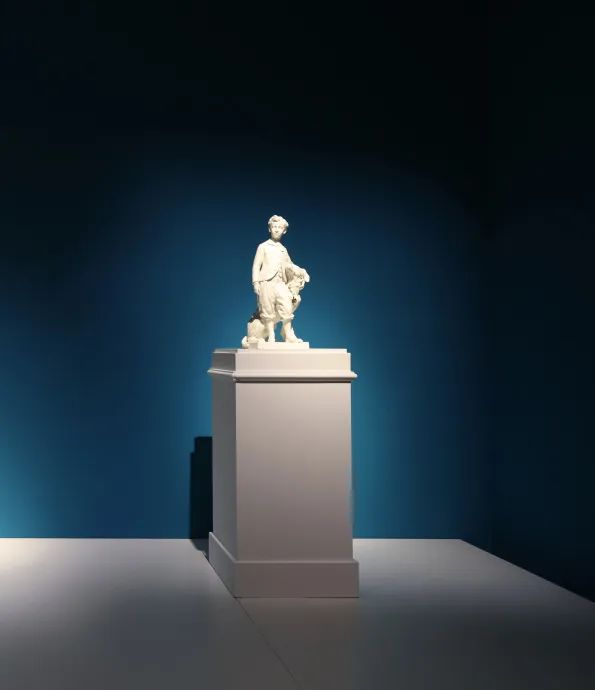
1864年末,卡尔波被委托完成法国皇太子的肖像。实际上这是个双重任务,皇后希望他做一个半身像,而皇帝则想让他完成一个全身像。1865年4月,卡尔波在杜伊勒里花园的桔园中的一个工作室中开始选取皇太子的肖像造型。艺术家为当时只有九岁的皇子选取了几个造型:半身裸像、穿着军人制服的半身像、手中拿着帽子的全身像以及和尼禄(皇帝的一只魏玛猎犬)在一起的全身像。
At the end of 1864, Carpeaux was commissioned to complete a portrait of the French Crown Prince. This was a dual task, as the Empress desired a half-length portrait, while the Emperor wanted a full-length one. In April 1865, Carpeaux began selecting the portrait style for the Crown Prince in a studio within the orange groves of the Jardin Des Tuileries. The artist presented several poses for the nine-year-old prince: a half-naked bust, a half-length figure in a military uniform, a full-length figure holding a hat, and a full-length figure with Nero (the Emperor’s Weimaraner).
1865年5月6日,卡尔波把石膏模型呈交给皇后过目,皇后认为这件作品“出奇地精彩”。在1866年的沙龙展览上,这件大理石作品获得了同样的成功。小男孩站着,把手放在猎犬的颈链上,链子缠绕在他的腿上。男孩的姿势自然朴实,猎犬抬头看着皇子,诠释出了两者之间的感情。皇子身着平民便服、短款丝绒上衣、宽松短裤,这一切都强化了自然淳朴的状态。这尊雕塑是作为私人肖像来设计的,因此作品中的皇子丝毫没有展现出任何高贵出生的痕迹,也正是因为作品中没有权利的象征,才让这件雕塑在帝国覆灭后继续得以流传。
On May 6, 1865, Carpeaux presented the plaster model to the Empress for her approval, and she found the work “remarkably brilliant”. The marble version of this sculpture achieved similar success at the Salon in 1866. The young boy stands, placing his hands on the dog’s collar, with the chain around his legs. The boy’s pose is natural and unpretentious, while the dog looks up at the prince, conveying their emotional connection. The prince is dressed casually, with a short velvet jacket and loose shorts, emphasizing the natural and simple state. This sculpture was designed as a private portrait, so the prince in the artwork does not exhibit any trace of noble birth. It is precisely because the sculpture lacks symbols of royalty that it continued to be preserved after the downfall of the empire.

让·巴普蒂斯特·卡尔波
《渔童》是让·巴普蒂斯特·卡尔波最著名的作品之一,1856年他到罗马进修,1857年末他完成了这件作品的模塑。其认真观察生活后决定采用写实主义手法进行创作。这件作品也是他作为法国美术学院学生在罗马学习时第二学年的“寄送作品”。在获得“罗马大奖”到罗马进修学习时,每位法兰西美术学院的寄宿生每年都要向法兰西美术学院寄送一件作品,以此来证明他们在罗马学习的专心程度以及取得的进步。随后,寄送的作品会在美术学院和其他学生寄送的作品一同展出。从这点来看,《渔童》是卡尔波早期的作品,但是在公众眼里,这件作品反映出他是那个时代雕塑界发展的希望。
Neapolitan Fisherboy is one of Jean-Baptiste Carpeaux’s most famous works. He began his studies in Rome in 1856 and completed the modeling of this piece at the end of 1857. Observing life carefully, he adopted a realist approach in his artistic creation. This work was submitted as part of the second-year “sent work” requirement during his time in Rome as a student at École des Beaux-Arts. When awarded the “Prix de Rome” and sent to Rome for further studies, each boarder was required to send a piece of work to École des Beaux-Arts every year. This served as proof of their dedication and the progress they had made during their time in Rome. Subsequently, these sent works were exhibited at École des Beaux-Arts alongside pieces from other students. From this perspective, Neapolitan Fisherboy represents one of Carpeaux’s early works, but in the eyes of the public, it symbolizes hope for the development of sculpture in that era.
这件作品记录了前一年夏天卡尔波在那不勒斯的街上观察到的情景:一名年轻小男孩赤裸着身体蹲在地上,戴着渔民帽,手里拿着一个贝壳贴近耳边,听着贝壳里的回声,他面露微笑,而后准备起身奔跑。卡尔波对人物富有弹性的肌肉、浓密的卷发和迷人的微笑给予了很高的关注。从主体的选择以及运用写实主义手法进行创作来看,这件作品是他对美术学院的老师弗朗索瓦·吕德(François Rude)和弗朗西斯科·杜雷(Francisque Duret)的致敬。
The sculpture captures a scene Carpeaux observed on the streets of Naples the previous summer: a young boy crouching naked on the ground, wearing a fisherman’s cap, holding a shell to his ear to listen to its echo. The boy, smiling, is about to get up and run. Carpeaux paid close attention to the flexible muscles, dense curls of hair, and the captivating smile of the character. In his choice of subject and the use of realist techniques, this work pays homage to his teachers at École des Beaux-Arts, François Rude and Francisque Duret.
卡尔波的这件《渔童》作品轻盈飘逸,反映出卡波的天分和个性,在他的作品获得了巴黎人的好评之后,卡波拒绝把石膏模型卖给国家,而是制作了两件青铜材料的相同作品。其中之一在1859年的沙龙展览上展出,后被收藏家、商人詹姆斯·德·罗斯柴尔德(James de Rothschild)买走。汉白玉材料的作品则在1863年的沙龙展和1867年的世界博览会上大获成功,赞誉不断。卡尔波本来经济条件不太好,家人又去美国淘金,这让家庭经济状况变得非常困难,他不得不去寻求稳定的收入来源——制作不同材料的同一件作品然后售出。从1860年起,据《渔童》原模翻制成多件青铜材料作品;从1870年起,又开始改动《渔童》,即持有渔网的作品。因此,我们能够在多地见到这件作品。这些作品现分别存放于阿姆斯特丹(梵高博物馆)、哥本哈根(新嘉士伯雕塑博物馆)、第戎(第戎美术馆)、纽黑文(耶鲁大学美术馆)和华盛顿(国家美术画廊)。
Carpeaux’s Neapolitan Fisherboy exudes a graceful and ethereal quality, reflecting his natural talent and distinctive personality. After receiving acclaim from the Parisian audience, Carpeaux refused to sell the plaster model of the sculpture to the state. Instead, he created two bronze replicas of the same work. One of these replicas was exhibited at the Salon in 1859 and later acquired by collector and businessman James de Rothschild. The marble version of the sculpture achieved significant success at the Salon of 1863 and the 1867 World Expo, garnering continuous praise. Facing economic difficulties, exacerbated by his family’s pursuit of gold in the United States, Carpeaux had to seek a stable source of income. This led him to produce replicas of the same sculpture in different materials for sale. From 1860 onward, Carpeaux replicated the original Neapolitan Fisherboy in bronze. Starting in 1870, he modified the composition, creating a version of the sculpture depicting the boy holding a fishing net. As a result, various iterations of this work can be found in different locations, with these pieces currently housed in museums such as the Van Gogh Museum in Amsterdam, Ny Carlsberg Glyptotek in Copenhagen, Musée des Beaux-Arts de Dijon, Yale University Art Gallery in New Haven, and the National Gallery of Art in Washington, D.C.
艺术资源
更多作品照片、更多角度、更多局部、更高清晰度……,请登录后查看,免费下载

